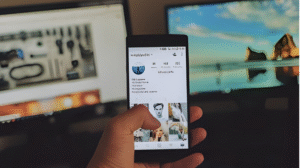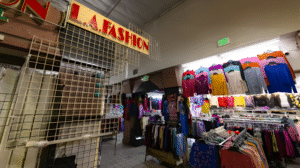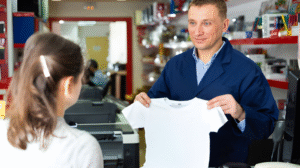Most new merch stores underestimate two basics: fulfillment takes ~2–5 business days before shipping, and typical store conversion sits around ~1–2% so slow delivery expectations and thin conversion margins can sting early.
What people actually struggle with: no clear niche, skipping samples (quality/size complaints), vague shipping ETAs (refunds), single-supplier risk (production and shipping delays), thin product pages, and margins wiped out by fees. Common questions: how long do orders really take, why isn’t traffic converting, do I need samples, how do I price after fees, and what if a printer messes up? These issues show up across Reddit, Quora, reviews, and Shopify forums.
This guide keeps it simple: we’ll call out the 10 avoidable mistakes, explain why they happen, and show the quick fixes so you set realistic timelines, price for profit, choose the right supplier, and build pages that convert from day one.
What “Good” Looks Like
- Clear niche and buyer in one line, so every product and photo speaks to the same crowd.
- Samples in hand before launch, with fabric feel, print check, and true-to-size notes.
- Product pages that answer size, material, care, delivery time, and returns without scrolling far.
- A delivery promise you can keep, showing production days plus shipping days on every page.
- Prices set after all fees and shipping, with a simple margin target you can defend.
- Photos that show front, back, close-up of print, and one on-body shot for fit.
- One primary supplier plus a ready backup, both test-ordered by you.
- Three numbers tracked daily at launch: sessions, conversion rate, and average order value.
10 Crucial Mistakes (Rapid Rundown)
Avoid these common pitfalls to keep your spirit wear fundraiser smooth and successful.
- Missing size guide and fabric details: Not posting clear measurements or fabric info drives preventable returns and cuts profits.
- Vague shipping times: Saying “fast shipping” without showing production + carrier days leads to complaints and refund requests.
- Pricing without fees: Forgetting platform, payment, and shipping costs shrinks margins and turns discounts into losses.
- Only using mockups: Relying on digital previews alone causes color, texture, and fit surprises that increase returns.
- One supplier only: Depending on a single POD provider risks delays and stock-outs that stall your whole store.
- Skipping checkout tests: Launching without running test orders leaves hidden bugs in taxes, discounts, and shipping rates.
- Launching without samples: Selling without sample checks creates quality complaints and costly reprints.
- Ignoring legal basics: Using unlicensed logos or marks risks takedowns, account holds, and even legal penalties.
- Hidden or missing return policy: Unclear or buried return rules raise chargebacks and drop repeat sales.
- No list-building or reviews plan: Launching without email capture or social proof kills remarketing and conversions.
1 – Missing size guide and fabric details
You launch with slick mockups, but buyers don’t see exact measurements, fabric weight, or care. The result is “didn’t fit / felt different” returns that drain cash and time.
In apparel, size/fit drives the majority of returns. A Coresight study found size/fit caused 53% of online apparel returns, and returns can cut the bottom line by 28.9% on average serious damage for a new store.
What You’ll Notice
- More “too small/too big” messages within the first 10–20 orders.
- Elevated return and exchange requests compared with peers.
- Repeat buyers stall out because product pages don’t answer fit or feel.
- Reprints/replacements push delivery out by 2–5 (Printful) or 2–7 (Printify) extra business days before shipping angrier customers, higher costs.
Why It Keeps Happening
- Relying on mockups instead of posting a clear size chart and how-to-measure graphic.
- No fabric callouts (e.g., 5.3oz cotton vs 4.2oz blend), so hand-feel expectations miss.
- Skipping sample orders to confirm real-world fit and print stretch.
- Underestimating how returns compound costs: processing, two-way shipping, and resale loss often consume most of the item’s price.
What It Cost a Real Store
Big retailers are tightening policies because return costs are so high:
In 2025 ASOS began closing “serial returner” accounts, citing the burden of processing returns; media reports note thresholds like 70% return rates triggering closures showing how unsustainable fit-related returns can get at scale. For smaller stores, industry analysis pegs apparel returns as a major profit leak; if returns reduce profit by ~29% and size/fit is ~53% of those returns, a new merch shop doing $10,000 in monthly sales could see ~$1,500–$3,000 in profit wiped out purely from preventable fit issues and the handling cost per return.
2 – Vague shipping times
You write “fast shipping” on the product page but don’t show how long production takes before the carrier picks it up. Expectations break fast when buyers learn fulfillment adds days to delivery. Printful’s own docs say average fulfillment is 2–5 business days before shipping; Printify lists 2–7 business days and that’s before carrier time.
Shoppers will tolerate a short wait if you’re clear. Recent surveys show most consumers now consider “fast shipping” to be roughly ~3 days, and 90% say two to three days is acceptable so if your timeline is longer, you need to set that expectation early and everywhere.
What You’ll Notice
- Pre-purchase questions about “when will it arrive?” keep rising.
- Carts drop at the shipping step when no delivery range is shown.
- Post-purchase complaints escalated when production time wasn’t disclosed.
- Refund requests spike while orders are already in transit, creating costly edge cases.
Why It Keeps Happening
- You list carrier transit times and forget to add production days.
- You don’t separate domestic vs. international windows.
- Your policy page shows ranges, but product pages and carts don’t.
- You rely on a default “fast” label instead of a date range buyers can trust.
- You assume production delays won’t vary by season or provider.
What It Cost a Real Store
Cart abandonment hovers around ~70% unclear delivery ranges add friction at checkout and push this higher. Refunds for “late shipping” can proceed while parcels are still in transit, so you risk losing both the product and the revenue. On a $10,000/month store, even a 10% uptick in late-delivery cancellations can burn ~$200–$500 in margin. Publish production + carrier windows on product pages to cut that loss.
3 – Pricing without fees
You set prices off product cost alone. After platform, payment, app, and shipping costs, profit shrinks fast. A small discount or free shipping can push it negative.
Most new stores convert around ~1–2%, so you can’t count on volume to save thin margins. Shopify Payments in the U.S. commonly charges 2.9% + $0.30 per order (plan- and region-dependent), before apps and shipping.
What You’ll Notice
- Orders come in, but monthly profit feels stuck.
- Discounts “work,” yet net profit per order falls.
- Free shipping promos cut into margin more than expected.
- Fees don’t match your spreadsheet.
Why It Keeps Happening
- You priced from COGS and forgot gateway and platform fees.
- You ignored app/theme subscriptions in per-order math.
- You assumed higher traffic would offset thin margins.
What It Cost a Real Store
At a 2% conversion rate and $35 AOV, a 2.9% + $0.30 fee removes ~$1.31 per order—about 3.7% of revenue before shipping or apps. On $10,000/month, that’s ~$370 lost to card fees alone; add one paid app and a free-shipping promo and it’s easy to burn $500–$800/month in margin you thought you had.
4 – Only using mockups
You launch with mockups only. Customers can’t judge fabric weight, print texture, or true color. Expectations miss; returns rise.
Providers themselves advise ordering samples first. Printful runs a sample program; Printify reminds sellers that production time varies by season and product, so fixes cost days. Real photos and notes from samples help set the right expectations.
What You’ll Notice
- “Color looks different in person” and “print feels rough” messages.
- Low review count and low photo reviews.
- Higher exchanges for size and color.
Why It Keeps Happening
- You skipped sample orders and real photography.
- You relied on auto-generated mockups that don’t show texture.
- You didn’t list fabric weight or close-up print shots.
What It Cost a Real Store
If 70% of carts are abandoned industry-wide, you can’t afford extra friction post-purchase. Each return typically eats shipping + handling and can erase profit on that order; even a modest 5% increase in returns on $10,000/month can wipe $300–$600 once labels, handling, and reprints stack up. Ordering three discounted samples and posting real photos usually costs less than one week of avoidable returns.
5 – One supplier only
You pick one POD supplier and hope they’re always in stock and on time. When they slip, your whole store slips.
Production windows are real: Printify’s guidance shows 2–7 business days before shipping, and their network status page flags operational changes. Shipping restrictions can place orders “On Hold,” delaying production until you act. A tested backup keeps orders moving.
What You’ll Notice
- Sudden “out of stock” or “on hold” statuses mid-campaign.
- Seasonal slowdowns add unexpected days.
- Support backlog while you scramble for answers.
Why It Keeps Happening
- You never onboarded a secondary provider.
- You didn’t track provider status pages or regional capacity.
- You assumed SKUs were interchangeable across providers.
What It Cost a Real Store
If a key SKU stalls for a week during a promo, a store doing $10,000/month can easily forfeit $1,000–$2,000 in lost sales and ad waste. Add replacements and extra support time, and the hit grows. A pre-tested backup provider cuts that loss by letting you re-route orders the same day.
6 – Skipping checkout tests
You never ran a full end-to-end test order. Taxes miscalculate, a coupon stacks wrong, or shipping shows the wrong rate and you find out after customers do.
Shopify provides test orders via Bogus Gateway or Payments test mode so you can verify taxes, shipping, and emails without charges. Many refund headaches on forums start with misconfigured checkout or shipping rules that weren’t caught in testing.
What You’ll Notice
- “Shipping looks too high/low” messages at checkout.
- Discount codes behave unpredictably.
- Order emails miss items or totals.
Why It Keeps Happening
- You didn’t simulate real flows with test mode before launch.
- You changed apps or rates and never re-tested.
- You rely on one city/region test instead of multiple zones.
What It Cost a Real Store
A single weekend with a broken rate or tax rule can tank conversion. If your site gets 5,000 sessions at a normal 2% conversion, a checkout bug that drops you to 1% costs ~50 orders. At $35 AOV, that’s ~$1,750 gone far more than the time it takes to run test orders after each change.
7 – Launching without samples
You go live on mockups alone. First orders land, and customers flag color shifts, thin fabric, or off sizing. Returns start to eat your cash.
Suppliers themselves tell you to order samples because quality varies by SKU and print method. Printful runs a sample program and explicitly says samples are the best way to check quality before selling.
What You’ll Notice
- “Color looks different” and “fit is off” messages after the first batch of orders.
- Sparse photo reviews and lower star ratings on early products.
- Reprints push delivery back by production time plus shipping.
Why It Keeps Happening
- You trusted auto-mockups and skipped test orders.
- You didn’t verify fabric weight, hand-feel, or print texture in person.
- You assumed all blanks and print lines are identical across providers.
- You underestimated the time cost of replacements and exchanges.
What It Cost a Real Store
Printful’s own timelines show 2–5 business days for fulfillment before shipping; every reprint adds the same delay again. If 5–10% of early orders need rework on $10,000/month, you can lose ~$300–$700 in labels, handling, and reprints more than the cost of a few sample orders.
8 – Ignoring legal basics
You design merchandise with team logos, artists, or brand marks you don’t own. It sells—until a takedown hits and your listing (or store) disappears.
Shopify states that infringing content can be removed under its IP policies and DMCA process. Leagues like the NFL actively police trademarks and pursue unlicensed sellers with cease-and-desist letters and, in some cases, lawsuits.
What You’ll Notice
- Sudden product removals or account warnings.
- Payment holds while a claim is reviewed.
- Support tickets about “content removed for IP infringement.”
Why It Keeps Happening
- You assumed “fair use” covers fan merch.
- You sourced logos from the web without a license.
- You didn’t check team, league, school, or artist licensing rules.
- You copied phrases that are actually registered marks.
What It Cost a Real Store
A takedown can erase your top SKU’s revenue for days or weeks. Under the Lanham Act, rights holders can seek profits and damages; courts can award up to 3x damages for willful infringement far costlier than licensing or original design work. One removal during a promo can forfeit $1,000–$5,000 in expected sales for a small store.
9 – Hidden or missing return policy
You leave returns vague, or bury the policy. Buyers hesitate at checkout and support inbox volume jumps when things go wrong.
Clear returns reduce friction and can even preserve revenue via exchanges or store credit. Narvar’s 2024 report notes brands can convert up to 60% of returns into exchanges/credit with a better process; Shopify provides built-in return rules and self-serve workflows to set expectations.
What You’ll Notice
- More “How do I return this?” messages than orders.
- Higher chargebacks after unclear timelines or fees.
- Lower repeat purchase rate compared with peers.
Why It Keeps Happening
- Policy is generic, hidden, or inconsistent across pages.
- No self-serve returns or clear window/condition rules.
- No mention of who pays return shipping.
- You don’t offer exchanges or store credit to save revenue.
What It Cost a Real Store
Cart abandonment trends show hidden costs and vague policies drive drop-off; industry trackers list abandonment near ~70%. Fixing clarity can recover lost checkouts. Even converting 20–30% of returns into exchanges (vs. Narvar’s 60% ceiling) on $10,000/month can retain ~$200–$600 otherwise lost to refunds and fees.
10 – No list-building or reviews plan
You launch without email capture or a way to collect reviews. Traffic comes and goes; you can’t re-market, and pages lack social proof.
Email still drives outsized revenue for ecommerce, with platforms like Klaviyo providing benchmarks and built-in signup form analytics; on-site reviews materially raise conversion Spiegel’s research shows shoppers rely on them and conversion rises as credible review volume increases (until very high counts).
What You’ll Notice
- Flat repeat sales and weak launch-day spikes.
- Low conversion on product pages with no reviews.
- Paid traffic doesn’t pay back because you can’t follow up.
Why It Keeps Happening
- No popup or embedded form on key pages.
- No post-purchase review request flow.
- You wait for organic reviews instead of inviting buyers.
- You rely only on social DMs rather than owned email.
What It Cost a Real Store
Without a list, you miss easy win-back and launch emails. Capturing even 2–3% of visitors with a simple form can add 100–150 subscribers per 5,000 sessions; at a modest first-purchase conversion later, that’s dozens of orders you otherwise lose. Pages without reviews forfeit conversion lifts widely documented in retail studies.
Conclusion
If you keep expectations clear, test your flow, and price with fees in mind, a new merch store can grow without nasty surprises. Spell out production plus shipping time, show fit and fabric, collect reviews, and build your list from day one. These small moves prevent big leaks.
And when you want a clean, school-ready merch setup with simple choices and honest timelines, VarsityVault is built for that quality check, clear on delivery, and easy to launch without the headaches.
FAQs
Do I really need to order samples before launch?
Yes. Quality and fit are the #1 return drivers in apparel; size/fit accounts for ~53% of returns, and returns can cut profit by ~29% on average. A few samples cost less than a week of preventable returns.
How long will orders actually take with print-on-demand?
Most POD items are made in 2–5 (Printful) or 2–7 (Printify) business days before shipping; then add the carrier’s transit time. Publish both parts on product pages to reduce refund friction.
What’s a realistic conversion rate for a new merch store?
Expect low single digits. Industry roundups show many ecommerce sites convert around ~1–2% (varies by niche and traffic quality), so you must protect margin and reduce friction to win.
Do size charts and fit guidance really reduce returns?
Yes. Since size/fit drives over 50% of apparel returns, clear charts, fit notes, and fabric details reduce mismatches and the costly reprints and exchanges that follow.
How do I safely test my checkout, taxes, and shipping?
Run test orders with Shopify’s Bogus Gateway or Payments test mode to verify rates, taxes, codes, and emails end-to-end before you pay for traffic.
Will better sizing tools really move the needle?
Yes. Retailers using fit tech report measurable return cuts (e.g., 4% fewer size-related returns at Zalando; 14% drop at Foot Locker Europe with Fit Analytics), and majors are piloting AI fit systems to lower costs.



